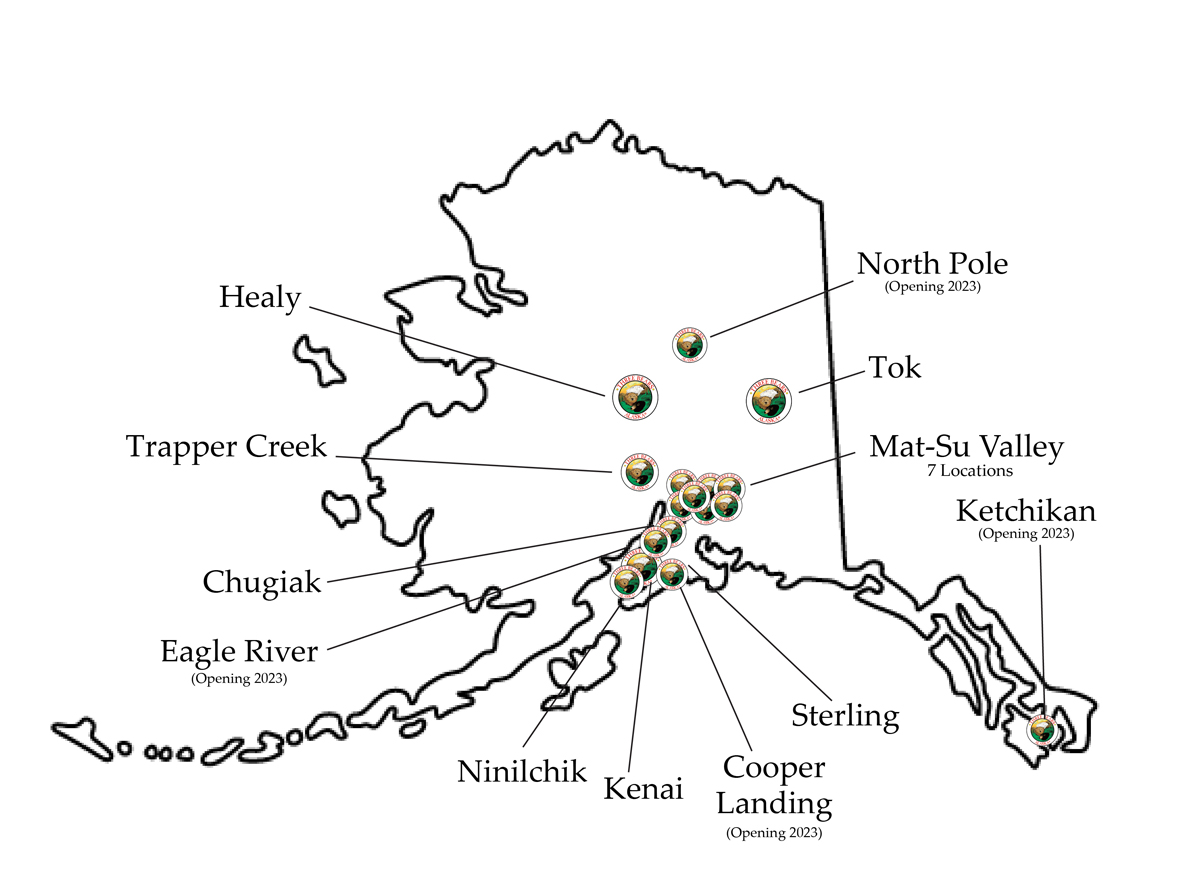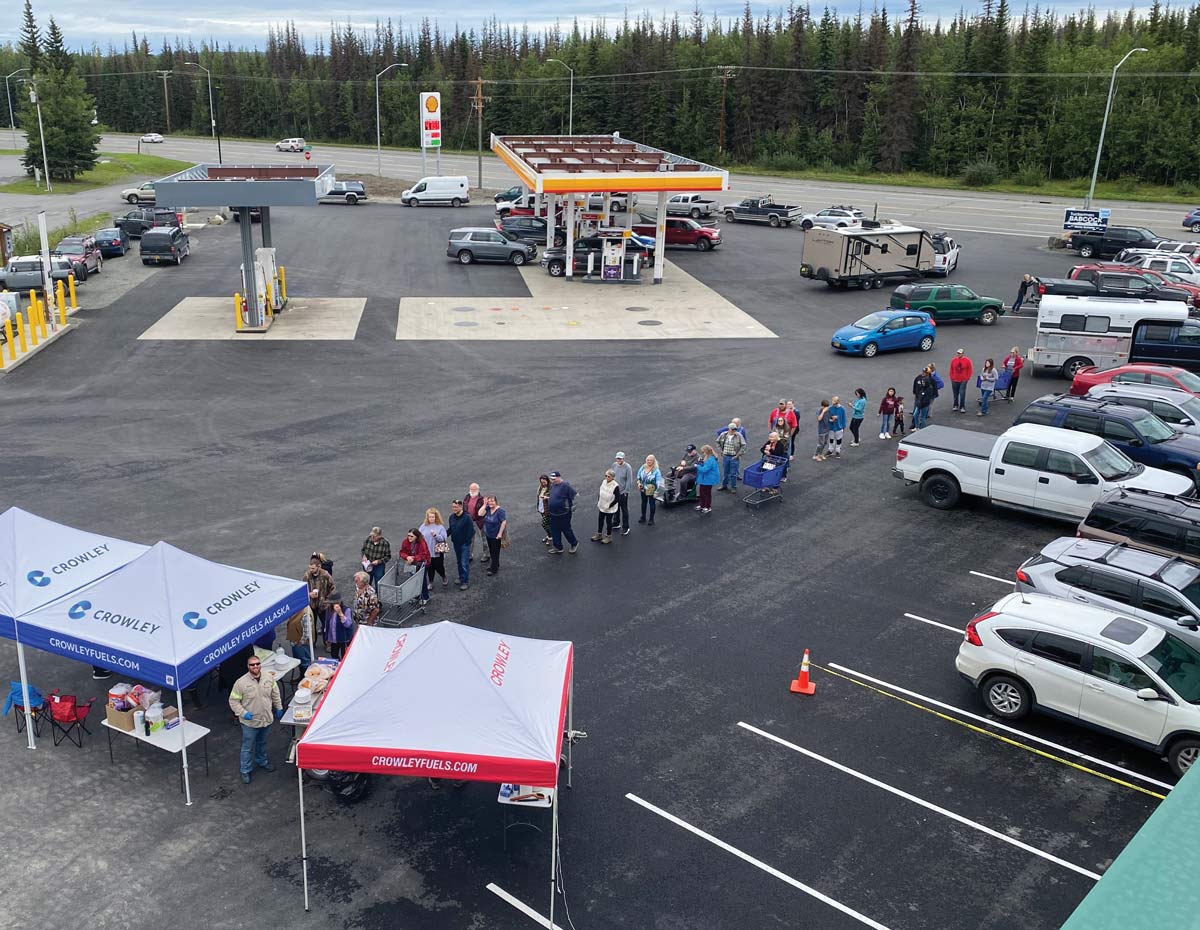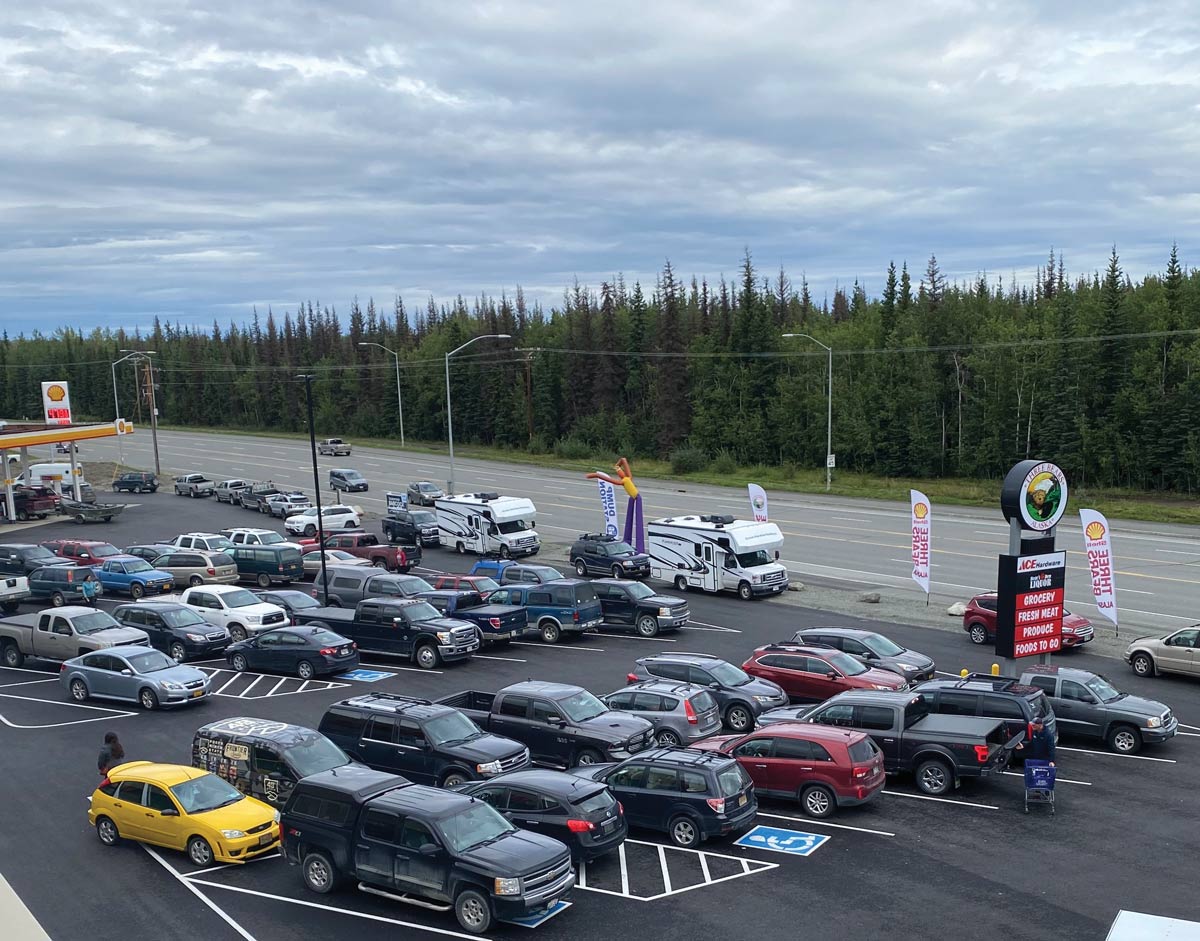
he Three Bears Alaska grocery and retail chain began as an unassuming roadside store and has blossomed over the decades.
“We’re definitely an Alaska company,” says Three Bears’ CEO Dave Weisz. “We started in Alaska. Our employees are all Alaskan. We will be moving up in the next few years in the range of about 1,200 employees to staff all the new locations we have going on.”
In August 2022, Three Bears opened a store in Sterling on the Kenai Peninsula with a fun and splashy community open house, inviting locals to enjoy free hot dogs and burgers, prize giveaways, and shopping discounts.
More plans for the Alaska market are in the chute, with anticipated stores opening in Ketchikan, North Pole, and another Kenai Peninsula location in Cooper Landing. These locations reflect Three Bears’ growth strategy over the years. Avoiding the urban centers in Anchorage, Fairbanks, or Wasilla, the retail chain more commonly targets smaller-town markets where people live an inconvenient distance from city supermarkets.
“Where the legacy of Three Bears is concerned, I like to say, it’s like the American dream, but it’s the Alaska way,” Weisz says.
Weisz’s father, Larry, founded the company’s first grocery store in the sleepy junction town of Tok in November 1980. He named it Gateway Food Store. Larry had a background in the Navy, then worked for the Carrs grocery chain, managing various stores before striking out on his own. It so happened a grocery store in Tok was for sale.
“They didn’t have much of a meat case, and any meat they had was frozen,” he recalls. “They hardly had any fresh vegetables. One of the first things we did, we worked on putting in fresh meat and fresh produce. We had to learn to cut meat and handle produce and do all the ordering, but it was just part of the growth.”
Weisz, the oldest son in the family, had just graduated from high school. Working at the family business that first winter in Tok, Weisz experienced extreme Interior Alaska cold for the first time.
“I look at some of the old pictures where the company started,” Weisz says. “We found one photo of the old Gateway Food Store, and it’s just incredible to look at. We pretty much just had that store for quite a few years… It wasn’t until the late ‘80s that we actually expanded out with another location.”
“At that point, you know, as a small operator, it’s pretty tough to make yourself ultra-competitive,” he says. “We realized that the only way that we could get ultra-competitive was to get bigger.”
In 1989, Larry Weisz and two partners opened a grocery called Three Bears in Valdez. Four years later, Three Bears opened a “super-convenience” store in Seward with a fuel station added later. In 1997, a mini-warehouse store format opened in Kenai.
“I’m an optimistic person,” Weisz says. “I just looked for ways we could grow the company, things we could do to improve. Along the way, we wanted to take care of the customers that we have. We always say that when we open a new store, we come in with a basic plan, but we allow our customers to tell us what they’d like to see, and we allow the managers to make those changes. That’s been a part of our success: we adapt to the different communities we’re in.”
Three Bears Alaska
Three Bears Alaska

At the time, Weisz notes, some 75 to 85 percent of Three Bears’ customers were women. Three Bears was missing out on a huge demographic, and Weisz wanted to attract more male shoppers.
“Some of our locations had stuff for the home office and a pretty large assortment of new appliances,” he says. “We didn’t sell a lot of that product, but it ate up a lot of sales floor space. I reviewed what we did in sales in some of our stores, and, based on sales per square foot, this stuff wasn’t carrying it. So we said we’re going to get out of this and get into hunting, fishing, camping, and reloading.”
With sporting goods in place, sales soared—and quickly. Shopper demographics rapidly leveled out, with men now making up half the customer base. By 2004, that Kenai Three Bears grew to 48,000 square feet to include a mix of bulk warehouse products and conventional grocery products.
Another warehouse-model location launched in July 2005 at Four Corners, between Palmer and Wasilla. A mini-warehouse location in Meadow Lakes opened in 2008, and Three Bears moved its corporate headquarters to a building about a mile away along the Parks Highway.
Three Bears Alaska
Three Bears Alaska

Since then, other ventures have included stores, warehouses, and gas stations on Knik Goose Bay Road outside of Wasilla and in Chugiak, Big Lake, and Ninilchik.
For Dave Weisz, researching, planning, and opening stores presented fun projects, a combination of math and economics and community needs and schematics.
“I enjoyed opening stores, merchandising, and finding the right products,” he says. “I’m an Alaskan and there are a lot of things I like and a lot of things I know my customers will like. I go to buying shows with those kinds of thoughts. If I see something I know I’ll purchase, I’ll make sure we carry it in the store.”
Three Bears Alaska
Three Bears Alaska

Designing this, once again, was a matter of determining what retail combination was “just right” for the community at hand, Weisz says.
“Based on community size, we determine what all amenities we’re going to put into the location, what kind of square footage,” he says. “You want to make sure it will last the community for years to come. We listen to the customers and listen to what they want. We want them to feel like this is their store. That’s been part of our growth and success. It’s all based off the customer.”
More Three Bears owned-and-operated convenience gas stations opened in Palmer, Houston, and Trapper Creek. Other properties added space and new features, like liquor stores and car washes.
Three Bears Alaska

Three Bears Alaska
Three Bears has survived by evolving. A major development in Three Bears’ business model came when the chain began offering hardware—a service expansion prompted by its own business needs. Three Bears had negotiated a five-year lease on an empty Big Lake grocery store and purchased adjacent property with plans to build a new store.
“We’re setting that store up and we need screws, nuts, and bolts, and we’d have to run all the way to Home Depot in Wasilla, and we’d lose an hour just to buy something really basic,” Weisz says. “I said, ‘If everything goes well with this store and we build the new store I want to build in five years, we’re going to add a hardware store.’”
Partnering with Ace Hardware, Three Bears began adding tools and supplies to multiple locations where residents previously had few if any options.
“There are a lot of do-it-your-selfers in Alaska, a lot of people who have cabins in remote areas, so these hardware stores are there for the convenience of our customers,” Weisz says. For example, before adding a hardware store in Ninilchik, folks would have driven to Soldotna for nuts and bolts. “So we added a small footprint hardware store there, and Ace did an exceptional job,” Weisz says. “There’s a lot of product in that little building.”
The Tok location’s Ace Hardware even includes a lumber yard, added in 2021, a huge asset to locals, Weisz says.
At the August grand opening of the Sterling store, locals turned out in droves. That day saw 1,700 customer purchases—more than twice the volume of a normal day, says Steve Mierop, Three Bears’ vice president and CFO.
“We had tons of great giveaways, free food, music, and great deals,” Mierop says. “I’d say we had 4,000 or 5,000 people during the course of the day—tons of folks just hanging out, checking out the store, and having a good time.”
The backbone of the business model remains groceries—providing better access to real butchers and fresh fruits and vegetables. Beyond that, the company grounds its businesses in three different retail formats: the “super C store format,” which are the large convenience stores; smaller grocery stores that range from 25,000 to 35,000 square feet; and the mini warehouse concepts, running 45,000 to 65,000 square feet.
The chain’s largest store isn’t in Alaska at all. The branch in Butte, Montana is the lone ambassador for the brand in the Lower 48. It will remain alone while Three Bears spreads more paw prints across its home state.
In the next few years, “We have a very aggressive growth schedule,” Weisz says. This includes a convenience store and fueling station coming to Kenai and a small warehouse store in the works for Ketchikan, the first expansion off the road system. Weisz says Three Bears’ ease working with freight bound from Seattle affords a high comfort level coordinating with barges and freight. He expects groundbreaking on the Ketchikan project in Spring 2023.
Three Bears also plans a 2023 groundbreaking in North Pole. Plans call for a 54,000-square-foot building, an adjoining Ace hardware, a fueling station, and more. Cooper Landing is also targeted for development in 2023.
All these projects follow a similar trajectory, Weisz says: analyze demographics and sales projections, decide on store size and type. Then, start putting plans to paper. What’s the layout like? What products will they carry? What’s already in the community and what’s missing?
“Before you know it, you have a store layout,” Weisz says. “Then we send it off to the contractor, then it’s off to the engineers, and everyone puts their stamps on it and we move forward.”
Possibilities for growth are as endless as the number of Alaska communities where a supermarket has yet to take root. One by one, Three Bears is crossing them off its list.
“We know we don’t take care of 100 percent of customer needs, but we try to cover the majority of the bases they need day in and out,” Weisz says. “It’s a challenge but it’s fun.”
![]()